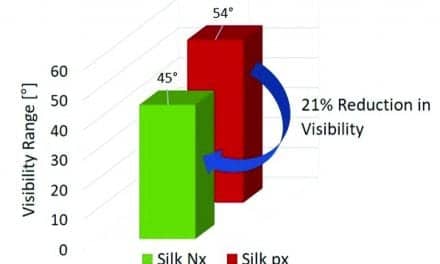
Michael Valente, PhD, presented some of the findings of the study during his seminar, “Why Verify the Performance of Hearing Aids?” at the recent International Hearing Society (IHS) meeting held in Phoenix.
A new double-blinded study by Michael Valente, PhD, and colleagues at Washington University in St Louis indicates that 4 out of 5 patients prefer programmed hearing aid fittings that utilize real-ear measurements (REM) as opposed to first-fit hearing aids. The research was published in the September 2018 edition of the Journal of the American Academy of Audiology (JAAA).
The findings were based on 24 first-time hearing aid users with moderately severe normal-sloping hearing loss using one brand of hearing aid, with the order of the two fittings (programmed or first-fit) randomly assigned and counterbalanced. The study used one brand of a premium (16-channel) hearing aid. The “first-fit” condition involved the proprietary manufacturer’s default first-fit setting, while the “programmed” fitting involved REM programming to the NAL-NL2 prescriptive target. A second investigator measuring the outcomes of speech recognition in quiet (CNC word lists in R-Space), noise (HINT in R-Space), and scoring the subjective measures (APHAB and SSQ) for the fittings. (The first-fit condition did use REM in order to determine the amount of output/gain the hearing aid was providing but not as a tool to program the hearing aid.)
The results showed that 79% of the study participants preferred the programmed fittings using REM versus the first-fit. The programmed fit provided them with an average of 15% better word recognition, and an improvement of 7.7% phenomes at 50 dB SPL and 4% at 65 dB SPL. The programmed fit also provided a significant (4.2%) improvement in background noise, based on the APHAB.
Numerous studies have shown that first-fit hearing aids under-amplify high frequencies, negatively affecting speech recognition and patient satisfaction with hearing aids. The authors point out that using REM to verify a match relative to gain/output for the prescriptive fitting target is part of Best Practice Guidelines published by the American Academy of Audiology (AAA) and the American Speech Language Hearing Association (ASHA). However, most estimates of the actual use of REM in professional hearing aid fitting range from 20-30%.
Valente et al conclude that “Using a first-fit alone without reprogramming using REM is fitting hearing aids blindly and not determining whether the patient is being provided appropriate audibility for soft and average speech…The audiologist or hearing aid dispenser can never be certain if he/she is appropriately fitting the patient without using REM.”
Study citation: Valente M, Oeding K, Brockmeyer A, Smith S, Kallogjeri D. Differences in word and phenome recognition in quiet, sentence recognition in noise, and subjective outcomes between manufacturer first-fit and hearing aids programmed to NAL-NL2 using real-ear measures. J Am Acad Audiol. 2018;29(8):706-721. Doi: 10.3766/jaaa.17005





